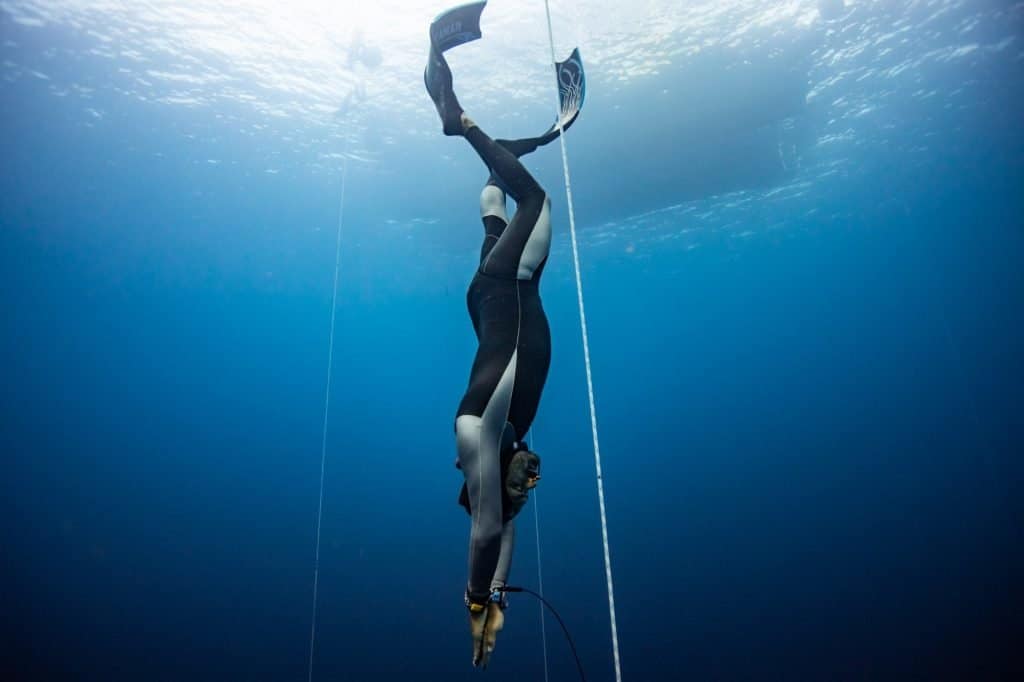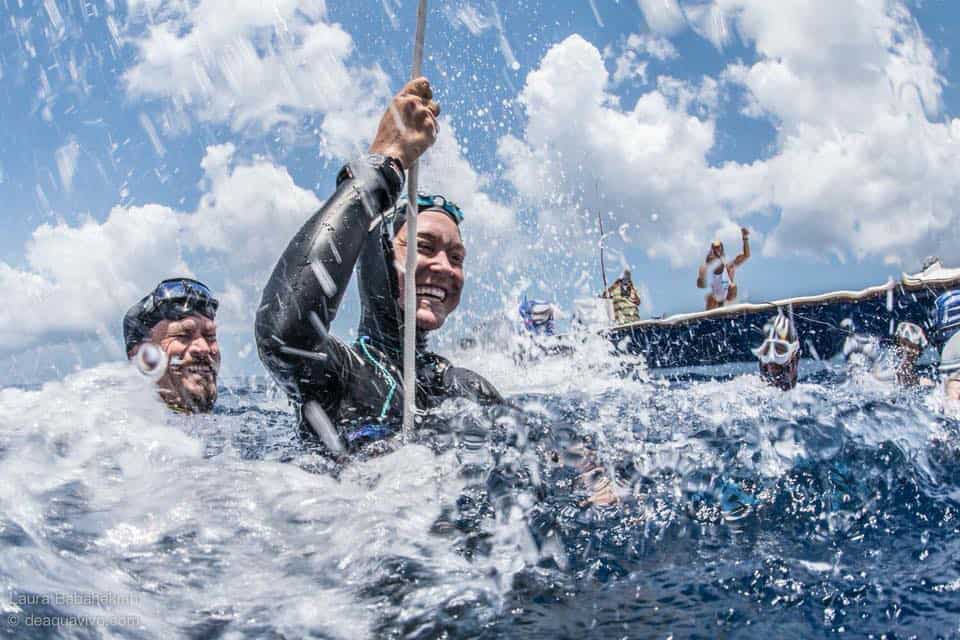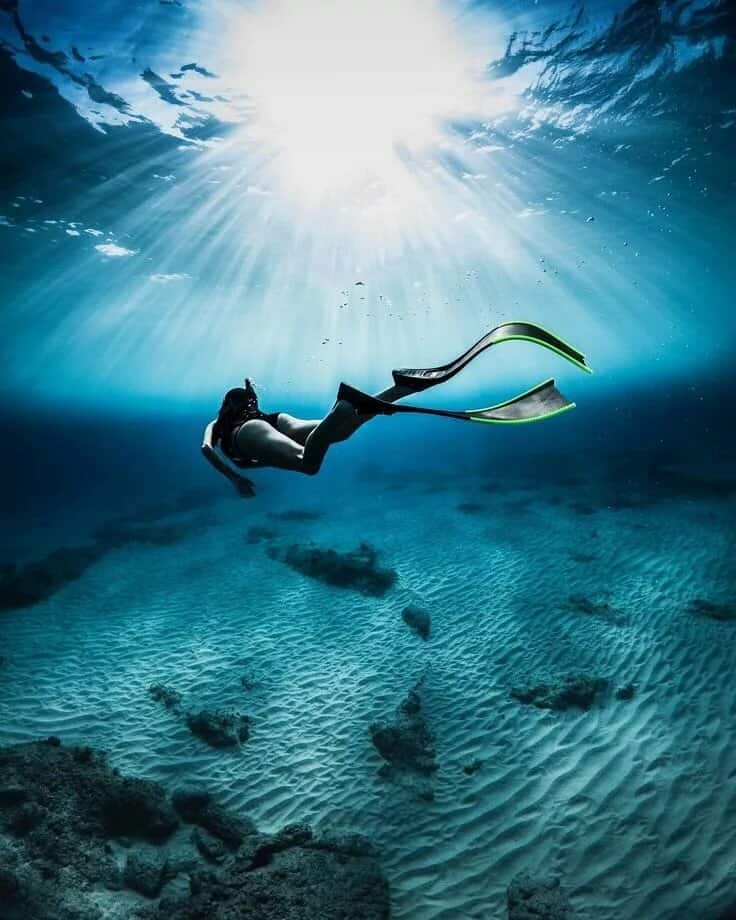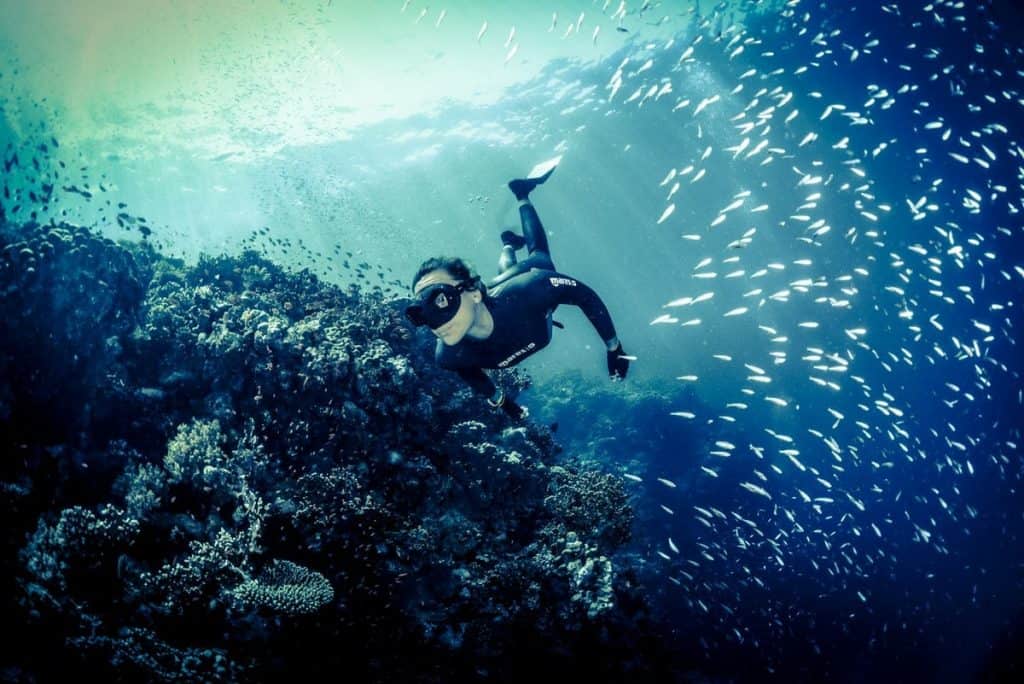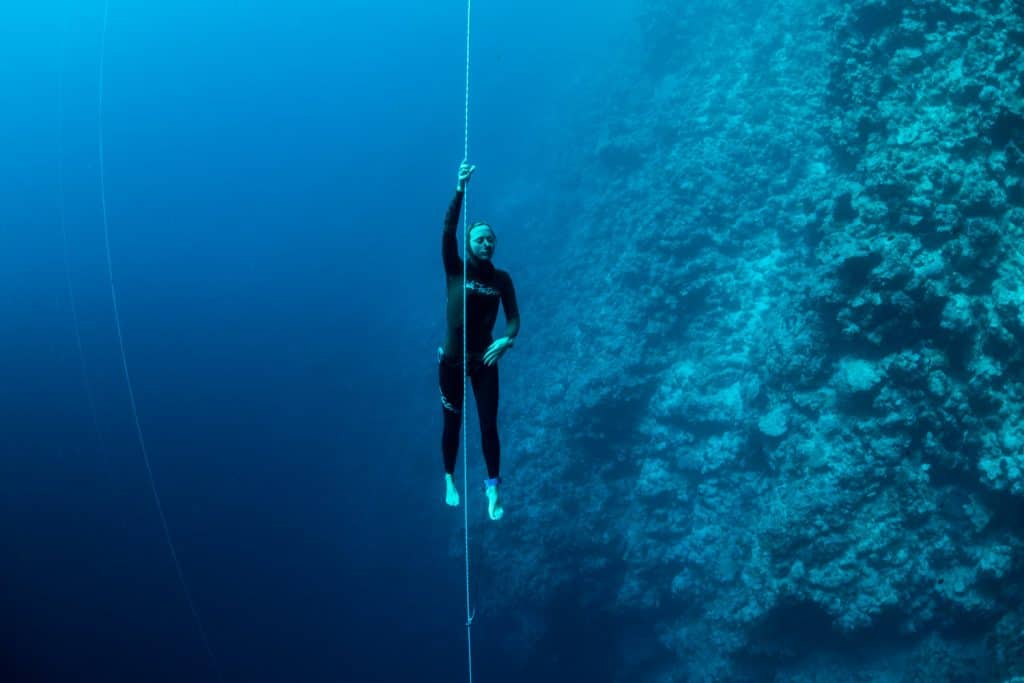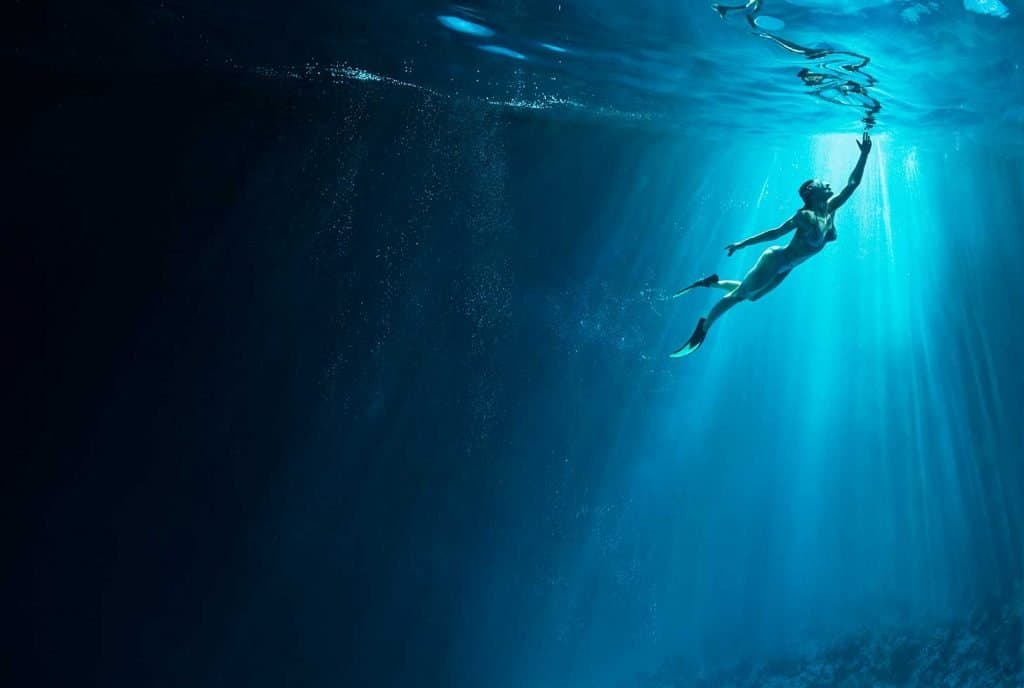Diving without an aqualung is regularly alluded to as ‘skin diving’ or ‘snorkeling’. Both can utilize a veil, snorkel, and balances, however, free diving will consistently include a breath-hold, regardless of how profound you go.
People originally began freediving through need, for food, exchange capable things or things lost over the edge, anyway in later time, freediving has advanced into a recreational hobby, an approach to take photographs, get food, and as a game.
Serious freediving has various orders to mirror the different ways that you can be in the water and hold your breath.
This accompanied the development of rivalries including groups, nations, and numerous people. Back in the early piece of this century, there was a differentiation between records done in salt and new water, in spite of the fact that this has since been halted.
In individual and group big showdowns, every diver will play out a consistent weight dive with blades, a powerful swim with balances, and a static breath hold with focuses granted for each order to show up at a last joined score.
Free drenching, consistent weight no-blades, and dynamic no-balances can likewise be an opposition discipline they are typically independent occasions.
The most perceived orders are clarified beneath, albeit numerous individuals frequently look to create new trains, regardless of whether for the sake of entertainment or rivalry.
How to Freediving
On the off chance that you need to figure out how to freedive, the best spot to begin is attempting to hold your breath submerged for as long as possible and afterward utilizing this number as a base figure to work from. Breath-hold diving is basically the start of freediving.
The way to holding a solitary breath for longer submerged is to get into the order of taking moderate, full breaths.
Take as much time as necessary and take in for 5 seconds and afterward out for 10-15. Practice on setting aside more effort to inhale out than you do to take in.
It is ideal to have a heartbeat of 80 thumps for every moment or less while you are rehearsing so as to be prepared for freediving.
In the event that you commit yourself to rehearsing, you will find that your heartbeat begins to slow after some time and you will have the option to dive to more prominent profundities as your heartbeat adjusts.
Difference between Snorkeling and Freediving?
From the outset, you may expect that snorkeling and freediving are one in the equivalent. In any case, there are in reality some truly distinct contrasts between the two.
Snorkeling expects divers to stay on the outside of the water to inhale, and afterward holding their breath while they dive until they reemerge.
While, freedivers evacuate their breathing mechanical assembly before they slide and just hold their breath for significant stretches of time.
What gear do you need to Freedive?
You can free dive without the requirement for any pro gear. Be that as it may, certain water conditions will require extra bits of hardware.
At Oyster Diving, we prescribe that any individual who needs to go freediving wears a wetsuit as water temperatures drop essentially at lower profundities.
More profound dives likewise expect divers to wear a veil with the goal that they can securely outline their course back to the surface.
How long can free divers hold their breath?
One of the most widely recognized inquiries we get posed is, ‘imagine a scenario in which I can’t hold my breath for quite a while?
The explanation this is such a typical inquiry is, that numerous individuals accept it implies they can’t turn into a freediver. In any case, this isn’t the situation.
With the best possible preparation, you will get the hang of breathing strategies that will assist you with holding your breath for more and more, until you can freediver for a shockingly long measure of time.
Do I need to know how to swim?
While you don’t have to have a great deal of swimming experience, we do urge hopeful freedivers to be certain and feel good in the water.
On the off chance that you need to qualify as a PADI Freediver, you should serenely swim 200 meters. You will likewise need to get familiar with various distinctive breath-holding strategies, some of which will include developing your resistance for swimming at profundity.
The earliest recorded Freedivers
The source of freediving can be followed back almost 2,000 years. Truth be told, one of the soonest recorded occurrences of freediving was in Japan about 2,000 years prior when ladies used to attach loads to their bodies and dive to profundities of 30ft wearing simply an undergarment. You can peruse progressively about the inconceivable Ama Pearl Divers here.
Freediving – main directions:
1. Recreational freediving
Recreational freediving is a relaxation action that improves your physical, mental, and passionate state. Recreational freediving is pointed absolutely at getting delight from a dive.
Diving in a pool resets your brain and leaves you feeling restored. While diving adrift encourages you to discover agreement with nature and inside yourself, feel all out opportunity submerged just as investigate astounding submerged world.
Spearfishing, diving for fish or shells have been completed everywhere throughout the world for a huge number of years and stays a famous recreational movement today.
2. For health and fitness
Freediving for wellbeing and wellness improves our physical capacities through anaerobic exercise. Light hypoxic preparation is known to have a positive effect on the physiological frameworks of the body.
Freediving can likewise improve our emotional wellness by improving our capacity to oversee worry, to concentrate all the more eagerly, and to be increasingly careful and mindful.
3. Competitive freediving
Serious freediving centers around the advancement of a freediver’s capacities, in order to accomplish individual bests and break records in static apnea, dynamic apnea, and profundity freediving.
Types of Freediving
1. Constant Weight Freediving
Consistent weight freediving should be possible with or without balances and is a profundity discipline. Numerous divers see steady weight freediving as probably the most perfect type of freediving as divers slip into the water under their own weight.
2. Free Immersion Freediving
This sort of freediving is one of the most notable as it includes a profundity of control. Furthermore, what we mean by that is it includes a diver pulling down to the profundities on a rope and pulling themselves back up once more.
This helps save the body from spending oxygen too rapidly as divers don’t need to utilize their legs to drive themselves advances. Free inundation diving is additionally an incredible path for understudies to learn evening out aptitudes progressively.
3. Variable Weight Freediving
This freediving style is performed by adding additional load to the diver so they can make a trip to additional profundities and afterward come back to the surface without anyone else’s help.
While variable weight freediving is definitely not a serious control, there are divers who have established world precedents in it.
4. No Restrictions Freediving
At its most profound, no restrictions freediving is apparently the most hazardous we have referenced on this rundown.
In no restrictions freediving, you use loads to accept you as profound as could be expected under the circumstances, and afterward a lightness gadget to return you to the surface.
5. Static Apnea
Set forth plainly, this is essentially holding your breath for whatever length of time that conceivable while lying on the outside of the water.
Static apnea is regularly rehearsed in a pool and is viewed as probably the hardest order to ace basically in light of the fact that there is nothing to divert you from holding your breath.
Likewise, numerous divers discover it is simpler to surrender early on the grounds that the surface if just millimeters away, as opposed to meters like it would be in the sea.
Static apnea is an extraordinary all-rounder as it trains divers in their breath control, creating mental strength, expanding certainty, and essentially creating breath control.
6. Dynamic Apnea
This kind of freediving can be performed with or without blades and is generally completed in a pool. Dynamic apnea is ideal for preparing divers who think that it’s exceptionally hard to even out without any problem.
Dynamic apnea assists divers with getting a charge out of freediving without encountering issues of profundity.
From what age can I start Freediving?
To take on the PADI Freediver course you should be at any rate 15 years of age. Notwithstanding, in case you’re more youthful than 15 years of age yet need to figure out how to freedive, we have altered courses accessible.
Those matured 12 years or more established can take a crack at the PADI Basic Freediver course and anybody matured 8 years old or more seasoned can begin their PADI Skin Diver course.
How long does it take to get certified?
PADI courses are built with the goal that the necessary aptitudes can be aced regardless of set timeframes. A few people may discover these abilities simpler to accomplish while others may require somewhat more time.
Regardless of your common capacity, the PADI Freediver course will guarantee that you’re outfitted with the suitable aptitudes expected to securely freedive.
What are the course requirements?
To turn into a PADI Freediver you should finish three fundamental periods of the course:
1. Knowledge Development – This is the hypothesis bit of the course that you should finish before you start your limited and untamed water meetings. You can finish this autonomous examination either through PADI Freediver eLearning or study hall meetings with your PADI Freediver Instructor.
2. Confined Water Sessions – During this segment of your course, you will become familiar with various breath-hold procedures so as to accomplish a static apnea of 90 seconds and a unique apnea of 25 meters/80 feet.
3. Open Water Sessions – This is the place you will rehearse your breath-hold strategies during both free drenching and steady weight freedivers to 10 meters/30 feet. You will likewise finish a scope of mate and wellbeing methodology.
Do I need my own freediving equipment?
Not in any way. Freedivers just require a couple of hardware things; veil, snorkel, balances, weight belt (whenever required), and wetsuit (contingent upon you’re area), so most PADI Freediver Centers will have gear accessible available.
Obviously, as your affection for the game creates, you may choose to buy your own hardware.
